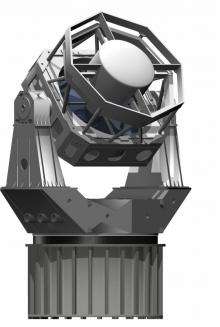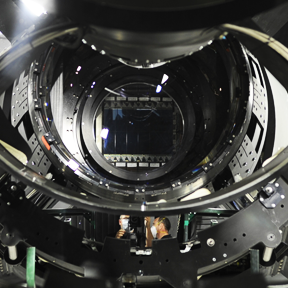(PhysOrg.com) -- The U.S. Defense Department’s, Defense Advanced Research Projects Agency (DARPA) in conjunction with the U.S. Air Force (and many unknown contractors of course) has announced the addition of a new telescope which it intends to add to the Air Force’s existing Space Surveillance Network (SSN); dubbed the Space Surveillance Telescope (SST), it will be capable of scanning the skies faster than other existing telescope of its size and will be able to collect data faster for dimmer objects to boot. The new telescope’s main mission is to track space debris to help in collision avoidance with the many sensitive satellites now circling the Earth.
Nine years in development, and with a price tag of $110 million, the new telescope will likely become ever more crucial as more and more space debris accumulates in orbit around the Earth as older satellites go off-line and new satellites are launched. The primary area of concern will be objects in geosynchronous orbit, (those traveling at speeds to match the Earth’s rotation so as to appear to hover in one place over the planet) as that’s where the military stations most of its spy satellites.
To achieve these new feats, engineers at MIT’s aerospace division, used a 3.5-meter aperture that connects to a curved charge-coupled device capable of capturing photons and turning them into electrons, which can then be digitally processed to produce the desired images. This technology allowed for an aperture that is more than three times the size of normal ground based telescopes and gives the telescope the ability to grab wide angle shots of the night sky, rather than the pin-point view that has been available up to now. Coupling that with a frame that allows the telescope to move quickly in its base, the SST is expected to give the Air Force a very precise view of where space debris is located, and where it’s going, giving satellite operators ample time to alter the course of their spacecraft.
Current estimates suggest there are now up to 22,000 objects floating around in near Earth orbit, all of varying sizes and shapes, (and all catalogued in the SSN) and it has been noted that objects as small as just one centimeter are capable of inflicting a lot of damage to current, fragile satellites. If the SST performs well, it is likely the Air Force will deploy duplicate telescopes around the globe to offer a 360° view of the sky.
More information: www.darpa.mil/Our_Work/TTO/Pro … Telescope_(SST).aspx
© 2010 PhysOrg.com






















